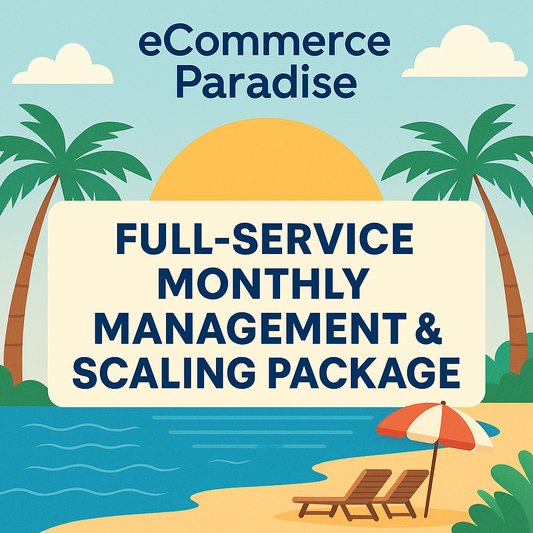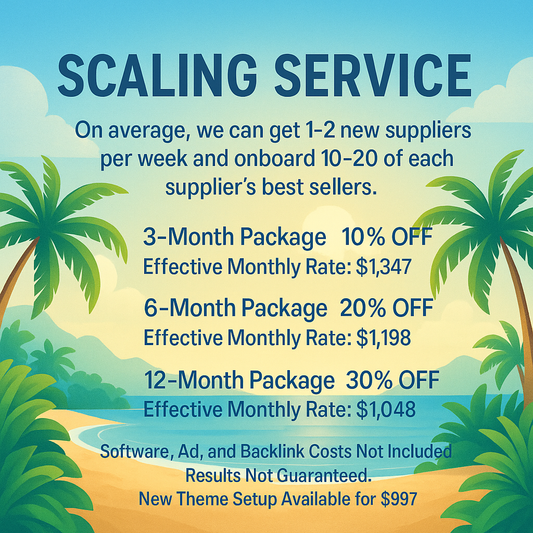
Enhance User Experience for Better SEO Today!
Hello, ecommerce enthusiasts! I'm Trevor Fenner, founder of Ecommerce Paradise, and today I'm thrilled to share insights on a topic crucial for anyone running an online store: enhancing user experience to boost your SEO. In the competitive world of ecommerce, creating an exceptional browsing experience can be the difference between converting visitors into loyal customers or losing them to a rival store. Let’s dive into the strategies that will elevate your ecommerce site and improve your SEO ranking.
Understanding User Experience (UX)
Before we get into the nitty-gritty, it’s essential to grasp what user experience (UX) entails. UX refers to how visitors interact with your website. A positive experience means users can easily navigate, find the products they want, and enjoy their time on your site. This seamless experience not only delights your customers but also signals to search engines like Google that your site is valuable. When you enhance UX, you're not just improving your business; you're also boosting your SEO efforts!
The Impact of UX on SEO
Now, let’s talk about why user experience matters for SEO. Google has made it clear that it prioritizes websites that provide quality user experiences. Here are a few reasons why UX plays a pivotal role in your SEO strategy:
- Lower Bounce Rates: If visitors land on your site and find it hard to navigate, they're likely to leave quickly. A high bounce rate can negatively impact your SEO standings.
- Increased Dwell Time: Engaging content and easy navigation keep users on your site longer, which tells search engines you’re relevant.
- Higher Conversion Rates: When the shopping experience is smooth, users are more likely to complete purchases, boosting your bottom line.
Essential UX Best Practices for Ecommerce SEO
Ready to enhance your site’s UX? Here are some practical strategies that will not only improve the shopping experience but also boost your SEO:
1. Optimize Your Website Speed
Slow websites frustrate users. If your store takes too long to load, potential customers may leave before they even see your products. According to Google, a 1-second delay in page load time can lead to a 7% reduction in conversions. Here’s how to optimize speed:
- Use a fast hosting service.
- Compress images to reduce load time.
- Minimize JavaScript and CSS files.
- Leverage browser caching and Content Delivery Networks (CDNs).
2. Mobile Responsiveness is Key
With mobile shopping on the rise, ensure your website is fully optimized for mobile users. A responsive design adapts to different screen sizes and devices, providing an optimal viewing experience for all users. Moreover, Google’s mobile-first indexing means it uses the mobile version of your site to rank pages. Therefore, you must prioritize mobile UX to stay competitive.
3. Intuitive Navigation
Clear, intuitive navigation is essential for guiding users through your store efficiently. Here’s how to make navigation work for you:
- Use clear category labels to group similar products together.
- Implement a search bar to help users quickly find specific items.
- Ensure all menus are accessible and easy to use, with no dead links.
4. Compelling Content is a Must
Engaging content keeps users on your site longer and encourages them to explore your products. Here are content types that work well:
- Blog Posts: Share valuable tips, guides, and stories related to your products.
- Product Descriptions: Craft unique, compelling descriptions that speak to the customer’s needs.
- Videos: Use video content to showcase product features and benefits—it’s highly engaging!
5. Streamlined Checkout Process
Once a customer has decided to purchase, they shouldn't face hurdles trying to complete their order. A complicated checkout process leads to cart abandonment. Optimize your checkout with these tips:
- Minimize the number of steps to checkout.
- Offer guest checkout options to speed up the process.
- Highlight security badges to reassure customers about their data safety.
Utilizing SEO and Google Shopping Ads
While enhancing UX is vital, combining it with effective SEO practices and Google Shopping Ads can magnify your success. Use these tips to integrate your efforts:
1. Integrate SEO Keywords Effectively
Your keywords should appear naturally throughout your content—this includes titles, headings, and product descriptions. For this post, I’ve sprinkled in keywords like “Ecommerce SEO” and “Dropshipping” to ensure it ranks well. Remember, using relevant keywords helps search engines understand what your site is about.
2. Optimize Your Google Shopping Ads
Are you running Google Shopping Ads? Implementing strong UX and SEO will enhance your ad performance. Here’s how:
- Write clear and accurate product titles and descriptions.
- Use high-quality images that represent your products authentically.
- Provide competitive pricing and clear shipping information to attract clicks.
Leveraging Email Marketing for Enhanced Experience
Email marketing is another powerful tool that complements your UX and SEO efforts. By nurturing your customer relationships through engaging email campaigns, you can keep your brand top of mind and increase repeat purchases.
1. Personalization is Key
People appreciate personalized experiences. Use customer data to tailor your emails and recommendations. For instance, if a customer frequently purchases skincare products, send them targeted emails with related offers. This not only enhances the customer experience but also drives traffic back to your site, improving your SEO.
2. Clear Calls to Action (CTAs)
Your emails should include compelling CTAs that prompt users to visit your site. Make it simple for them to engage with your store. Whether it’s a special offer or a new blog post, direct them to where you want them to go!
Keeping Your Site Up to Date
Regular updates to your site keep it fresh and relevant in the eyes of search engines. This doesn't just involve adding new products; it includes updating existing content and ensuring links work. Here are some areas to focus on:
- Consistently refresh product descriptions and images.
- Update your blogs with new information.
- Remove or fix any broken links that may lead visitors astray.
Wrapping It All Up With a Bow
Enhancing user experience is not just a task but a continuous effort that pays off in the end. By implementing these strategies, you can significantly improve your site’s SEO, engage your visitors, and ultimately increase your sales. Remember, happy customers will always return! So, let’s commit to creating an exceptional shopping experience that makes a lasting impression. Go ahead and take action on these strategies today—you'll be amazed at the difference it can make!
Stay awesome and keep thriving in your ecommerce journey!


















